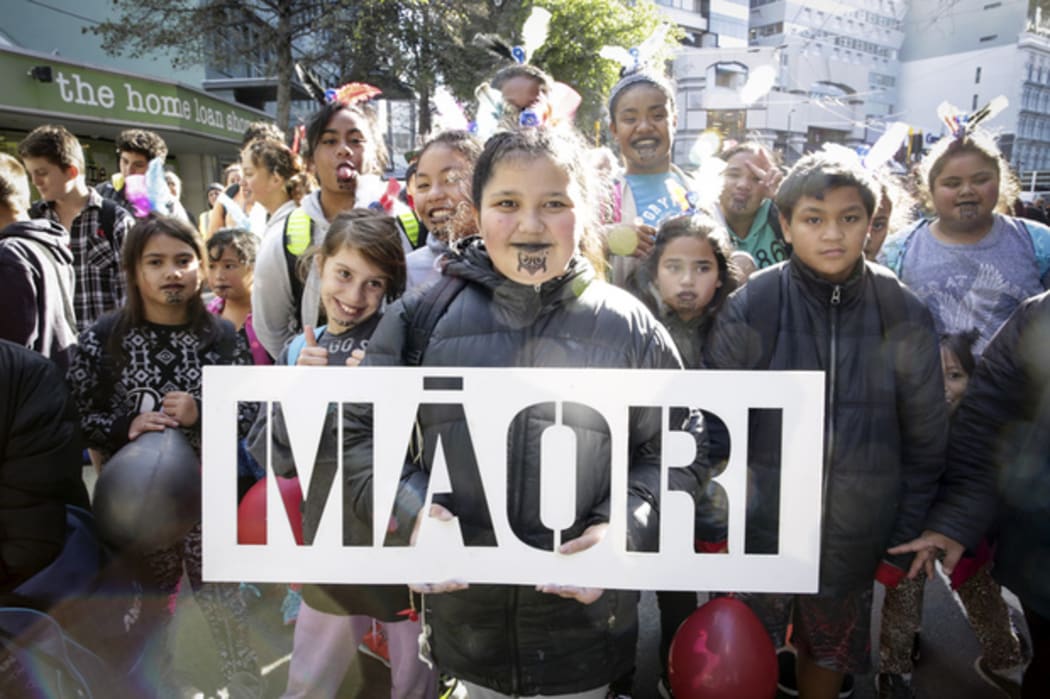Broadcaster and Māori language proponent Stacey Morrison talks through some of the nuts and bolts of speaking te reo. The grammar, the dialects, popular sayings, and some of the subtleties of the language.
“You don’t have to be an expert in te reo to be a champion of te reo," she says.

Photo: RNZ / Rebekah Parsons-King
If you’ve ever wondered if you’re using the right part of your mouth when speaking te reo Morrison says people do speak in a different part of their mouth to when speaking in English.
“Tūhoe in particular don’t tend to use their lips, the front of their mouths so much. It tends to come from the back of their throat, so I always found them harder to understand as a learner.”
Morrison says she tends to speak from the front of her mouth.
And there are quite a few differences in dialect between the regions, Morrison says.
“It’s quite a beautiful thing once you start to be able to hear where people might come from by the way that they speak.”
Listen to the full audio for pronunciation and to learn many more of the nuts and bolts of te reo.
Listener questions:
Who gets to come up with new words and how is the shaping of new words related to tikanga in a way that ensures we don’t end up with a straight English translation so we don’t use the unique Māori perspective that’s there when we “think” in te reo?
Stacey: “Te Taura Whiri, the Māori Language Commission generally has been charged with I guess verifying new words and it’s a really important point that’s been brought up – what we try to do is do the essence of the whakaaro (of the thought) rather than a straight translation.
“Sometimes words get their own momentum in terms of use. I know that broadcasters actively revive a lot of words so it’s not that it’s a new word but that it just hadn’t been in use for a while because we were using a more generalised form of Māori.”
Rorohiko is an easy example, she says. It means computer.
Roro means ‘your brain’ and hiko is ‘electrics’
“The electric brain of course is a computer.”
“The fact the Māori words tell us what something achieves I think is really interesting for children so that they can start to consider the purpose of an object in the very title of it.”
Nobody says Te Rerenga correctly and they say Cape Reinga, how can this be corrected?
Stacey: “Te Rerenga is actually such a spiritual place and important place even if you’ve just been there and witnessed the two seas coming together you can’t forget it and also in Māori belief, that’s where we belief Te Rerenga Wairua is – the spirits will leave from what they call Spirits Bay, or Te Rerenga Wairua, through that pohutukawa that’s there.”
When you know that’s what Māori believe, that the spirits of the dead leave there to go to the ancient home land, then Te Rerenga is worth putting a good effort into, she says.
Why do many of the words have repeated syllables, like kawakawa and kaka?
Sometimes this makes for a stronger meaning, says Morrison.
“Sometimes they can be dropped off and it doesn’t change the meaning. In general I would say it’s a nuance of te reo Māori that we like things being repeated.”
Three is an important number to talk about the parts of life; conception, life and death.
For example: he tāngata, he tāngata, he tāngata
Three tips for sounding ‘authentic’ when speaking:
If you think about and use what people call a ‘Māori accent’, you’ll sound more authentic because that is where it has come from.
Ta, te, to are all a soft T. For example, Tauranga is a soft T.
Ti and Tu are a harder T.

